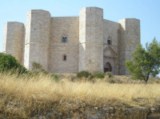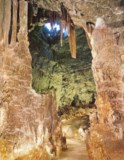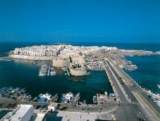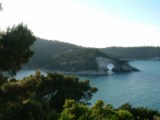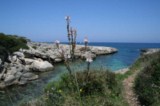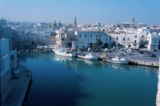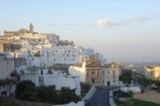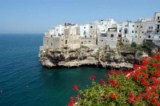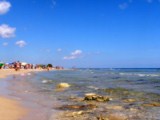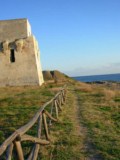|
HOTEL ROOMS ACCOMMODATIONS OFFERS IN APULIA
STAY BY GEOGRAPHICAL DESTINATION IN COASTAL MOUNTAIN OR RURAL AREA
Food & Wine
Local Traditions & History
History and Backgrounds
The Gargano
The Salento
Tremiti Islands
Castellana Grottoes
Apulia, a land located in the centre of the Mediterranean at the southern extremity of Europe,
offers splendid views from commanding positions, over fertile
valleys towards the sparkling Adriatic, delicious food and wine
and a wonderful warm climate.
This region extends into the sea toward the East and is only few hours
away from other splendid locations of Southern Italy like Calabria,
Amalfi Coast, Sorrento, Capri, Maratea, Sicily, Agrigento, Taormina.
Here, Nature imposes itself with a wonderful
variety of rich colours: red earth, dark green pine, silvery
green olive trees and lush vineyards; sparkling white labyrinths of
towns which seem to glisten in the sun; milky white medieval centres
with tangles of streets and alleyways, all against a backdrop of the
deep blue Mediterranean Sea.
What culture and knowledgeable hand of man have built, refined and shaped
to their measure across the millennium, blends with the favourable climate,
limpid sea, ever present sunshine, sandy and rocky coastlines, verdant
islands, characteristic grottos and other beauties generously profused
by nature on this land.
In this land you will find gems of architectural and historical
interest: Romanesque, Byzantine and Baroque churches, cathedrals,
castles, towers, prehistorical remains and last but not least the Trulli
Houses. These are built out of dry stone with thick solid walls
and conical roofs, you may sometimes find them gathered around each
other or even simply scattered in a picturesque way surrounded by the
wonderful countryside.
The kind southern character, the natural openness of the people, a truly
typical cuisine, exquisite wines, religions, and popular festivals,
historical commemorations, cultural events and endless hospitality facilities
create a particularly warm atmosphere.
Local Traditions and Uses

The dialects, traditions and cultures which still today characterize
the Apulian people, seem to be reflected in the geo-morphological features
of the areas they inhabit. Profound historical-cultural and geographical-environmental
diversities distinguish the areas of Capitanata, the Land of Bari, of
Salento and the Ionic Land which compose the Apulian territory, and
which correspond more or less to the present day provinces of Foggia,
Bari, Brindisi, Lecce and Taranto; in fact, the area was long known
as "the Apulias", and in some foreign languages it is still
designated with the plural.
History and Backgrounds
Apulia has always been an ideal region for human settlement and a zone
of commercial and cultural exchange thanks to its geographic position,
its gently sloping terrain and particularly pleasant climate.
Seat of populations which reached the highest levels of civilization since
earliest times, its prehistory is a cornerstone for studies on the more
recent Palaeolithic Mediterranean and European civilizations. Coveted
by East and by West, easily accessible by sea or by land, it was inhabited
in the historical period by the Illyrian populations of the Japigi,
the Dauni, the Peucetii and the Messapi, was the site of numerous Greek
colonies, was a Roman territory, an ally of Hannibal against Rome, was
included by Augustus in the "Apulia et Calabria" region.
This region on the eastern coast of Southern Italy, suffered barbarian
invasions, passed under the domination of Byzantium, obtained a certain
independence with the advent of the Longobards and subsequent Frankish
domination. Exposed to Saracen raids, it rebelled against Byzantium
in the 11th century with the interested help of the Normans, who made
it a principality. It was part of the Reign of Sicily, the Reign of
Naples, and the Reign of the Two Sicilies prior to Italian unity.
The history and culture of Apulia bear profound marks of the Greeks, Romans,
Byzantines, Arabs, Normans, Franks, Spanish and other populations
which left indelible traces of their presence. The contact with such
different ethnic groups and cultures has strewn the Apulian territory
with archaeological finds, castles, towers, cathedrals, urban
and rural buildings and other monuments built in a vast range of styles,
reinterpreted by the peoples of Apulia, who created an authentic "stone
culture" of their own.
|



